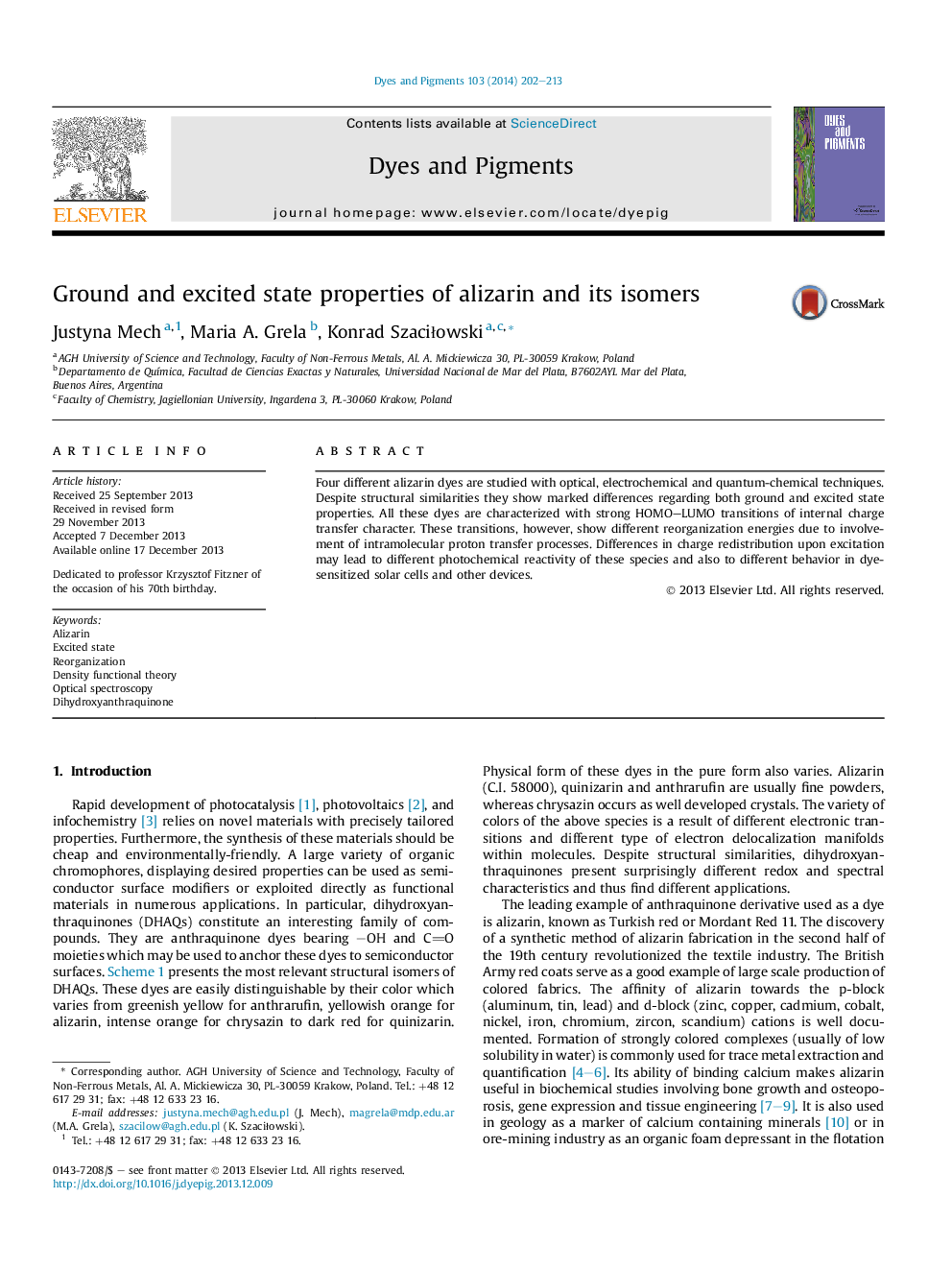| Article ID | Journal | Published Year | Pages | File Type |
|---|---|---|---|---|
| 176290 | Dyes and Pigments | 2014 | 12 Pages |
•Dihydroxyanthaquinone dyes are characterized by low energy charge transfer transition.•Excited state charge distribution varies strongly with position of substituents.•Arrangement of substituents affects reorganization and charge flow upon excitation.
Four different alizarin dyes are studied with optical, electrochemical and quantum-chemical techniques. Despite structural similarities they show marked differences regarding both ground and excited state properties. All these dyes are characterized with strong HOMO–LUMO transitions of internal charge transfer character. These transitions, however, show different reorganization energies due to involvement of intramolecular proton transfer processes. Differences in charge redistribution upon excitation may lead to different photochemical reactivity of these species and also to different behavior in dye-sensitized solar cells and other devices.
Graphical abstractCharge distribution in excited-state anthraquinones strongly depends on substituent geometry.Figure optionsDownload full-size imageDownload as PowerPoint slide
